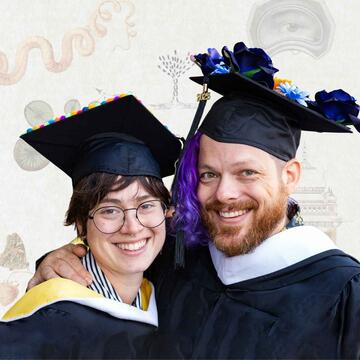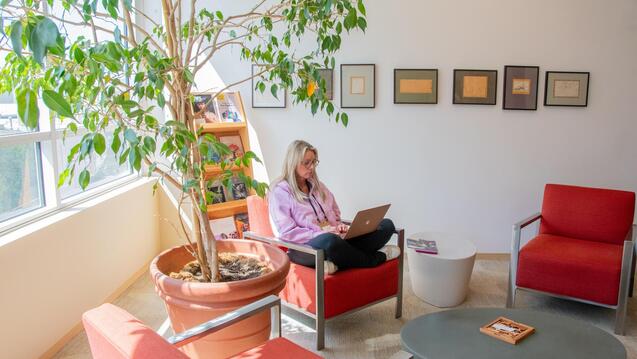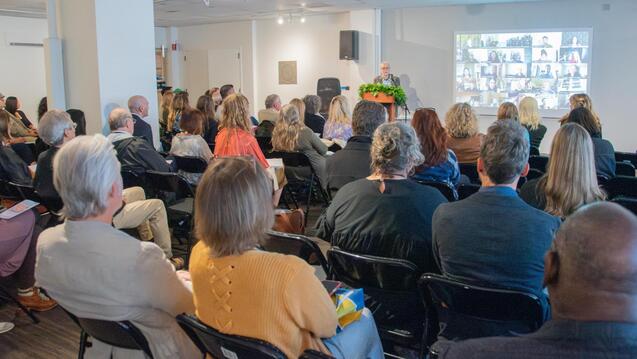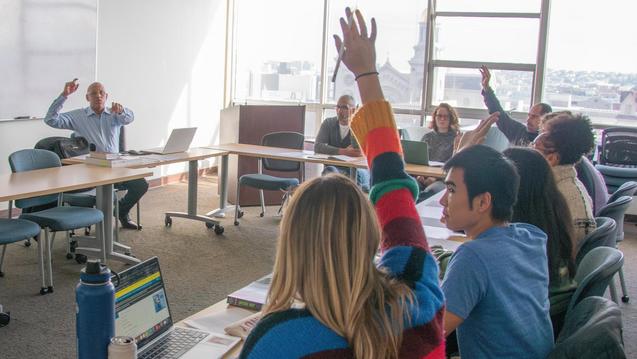Write a personal statement that reveals who you are, what shaped you, and why CIIS is your next step.

Native American Heritage Month
Reflecting on how we must do more than simply publish land acknowledgements when we honor the Native peoples of this continent and beyond.
“If you’re contemplating writing a statement, we encourage you to commit the bulk of your writing time to outlining the concrete ways that you plan to support Indigenous communities into the future. Otherwise, your land acknowledgement statement simply becomes yet another form of ‘optical allyship.’” - Native Governance Center
Land acknowledgements have become more and more common place. Most events I’ve attended in the last couple years have started with someone acknowledging the Indigenous People of the land. It is a good first step. But, if we aren’t mindful, land acknowledgements can become another performative box we check without investing in the healing work needed to change the settler colonial mentality that created the need for them in the first place.
If we are to heal and create a culture of belonging, it is necessary to acknowledge the past and the present – to acknowledge the people whose land was taken, who have been systematically and intentionally targeted in the name of eradication and assimilation. If we are to heal, it is important to understand the impact of both these practices.
There were 60 million Indigenous People in the US before Columbus landed here in 1492. Today there are approximately 6 million. The people that remain have been further impacted by assimilation (I.e., policies, practices, and cultural norms that insist everyone residing in the US fit into the homogenous “American” box). Assimilation has been a dominant culture value that seeks to strip people of diverse racial and ethnic backgrounds of their language, spirituality, and other traditions.
Indian Boarding Schools are a primary example of what assimilation looks like in real life. The idea of ‘killing the Indian and saving the man’ was put into practice for more than 150 years. History documents the first Indian School opening in 1860, with hundreds of thousands of Native American children attending schools in 29 states. While it is unclear when the last school closed, in 1978 with the passing of the Indian Child Welfare Act, Native American parents gained the legal right to deny their children’s placement in off-reservation schools for the first time.
Assimilation remains part of the ongoing political debate facing schools and teachers across the country today as the anti-critical race theory movement grows. The trouble is, healing really does require acknowledging the wound exists, that harm has happened. That’s why it is critical that we remember and tell the truth about our history and the history of Indigenous People in this country.
Land acknowledgements are a first step in right relations - in moving toward a culture of belonging. However, if we are to create a culture of belonging, where Indigenous People, and the rich spiritual practices we have inherited from them, are truly welcomed at CIIS, the real healing work begins after the acknowledgment, with an active responsibility to learn from history, living our seven commitments, and standing in solidarity with Indigenous Peoples.
History
CIIS sits on Ramaytush Ohlone land. The Ramaytush “are the original peoples of the San Francisco Peninsula. Prior to the arrival of the Spanish, the Ramaytush Ohlone numbered approximately 1500 persons, but by the end the Mission Period only a few families had survived. Today, only one lineage is known to have produced living descendants in the present.” (The Association of Ramaytush Ohlone).
Commitments
At CIIS, through the Division of Diversity, Equity, and Inclusion, we are committed to the work required to go beyond acknowledgements. Our Strategic Roadmap reflects this commitment through our five priorities to:
- Operationalize Racial Justice and Equity
- Increase Staff and Faculty Diversity, Retention, and Professional Development
- Expand Black, Indigenous, People of Color, LGBTQ+, Neurodiverse, Disabled, Ecological, and Liberatory Perspectives
- Create a Culture of Belonging
- Measure the Effectiveness and Impact of the CIIS Strategic Roadmap
Solidarity
In the next year, our solidarity will look like:
Working with the president and the provost to identity a faculty specialist who will work on aligning our curriculum with our seven commitments and strategic priorities. Producing workshops, conversations, and symposiums that reflect our lived commitment to anti-oppression and Indigenous wisdom across the university. Working to repair any harms related to the oppression of Indigenous People within our community. There’s more to be done and we know it. We honor Native American Heritage Month this month through our commitments, responsibility, and our actions steps toward change. If you are also interested in action steps, please watch this TedTalk by Nikki Sanchez.
Native American-Led Organizations
To learn more about Native American and Indigenous People and/or to support Native/Indigenous media outlets and businesses, please explore the links included below:
Indian Country Today - A place for digital indigenous news
NDNO&O - A directory that includes Native business
Landback.org - A film production company
Native Governance Center - A non-profit dedicated to support native nations in strengthening their governance.
The Ramaytush Ohlone Association - A non-profit organization that represents the interests of the original people of San Francisco
Related News
Over 370 participants gathered at CIIS to honor Jung’s 150th birthday in a transformative exploration of psyche, purpose, and collective healing.
Your roadmap to becoming a licensed clinical psychologist through CIIS' integral, holistic approach to doctoral training and professional practice.



